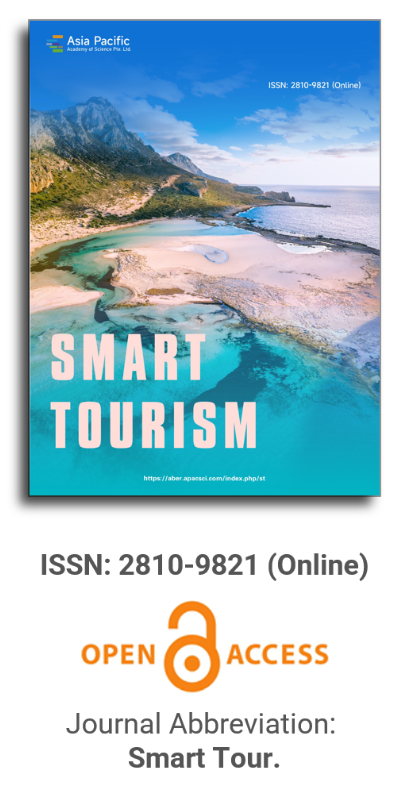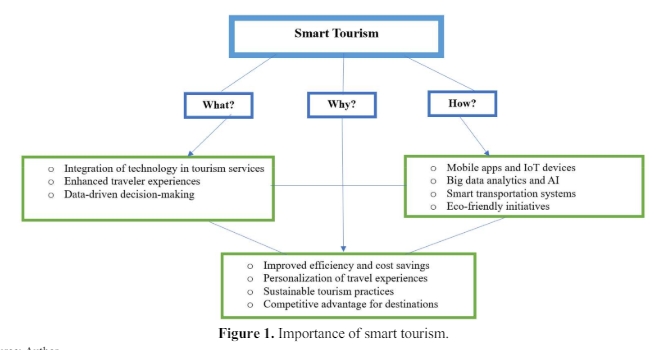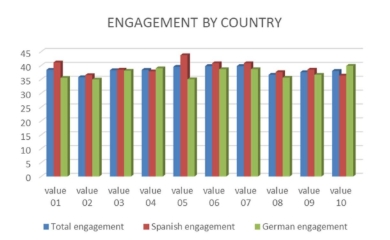


Bibliometrics approach to portray the research agenda of film and television tourism
Vol 5, Issue 2, 2024
Download PDF
Abstract
With the rapid development of digital media, film and television tourism has attracted extensive academic attention as a high-profile research field. This study aims to construct knowledge maps of the academic achievements of film and television tourism. Based on the SCI-E and SSCI databases of Web of Science (WoS), this study analyzed 492 publications between 2013 and 2023 using CiteSpace. Kim and Sangkyun are the authors who have the most posts. Beeton ranks second in the number of published papers, followed by Reijnders and Sue in third place. The primary academic contributions came from China, the United Kingdom, the United States, and Spain, with China contributing the most. Hong Kong Polytechnic University published the highest number of papers (21), followed by Edith Cowan University (16) and Erasmus University Rotterdam, along with Excl Erasmus MC (15 each). China excels in this field, with institutions such as Hong Kong Polytechnic University becoming vital in leading research. Keyword analysis reveals the academic focus on the destination image, structural equation modelling, destination loyalty, and heritage conservation. At the same time, social media, tourism motivation, and culture have become the research trends.
Keywords
References
- Jansson M, Wallenberg L. Women in the international film industry: Policy, practice and power. Springer International Publishing; 2020. pp. 163-178.
- Akın MH. Effects of Films on Tourism. Future Tourism Trends Volume 1. 2024; 173-184. doi: 10.1108/978-1-83753-244-520241012
- Zuo B, Tsai CH (Ken), Su CH (Joan), et al. Formation of a tourist destination image: Co-occurrence analysis of destination promotion videos. Journal of Destination Marketing & Management. 2023; 27: 100763. doi: 10.1016/j.jdmm.2023.100763
- Bhattarai K, Conway D. Contemporary Environmental Problems in Nepal. Springer International Publishing; 2021.
- Rahman M, Moghavvemi S, Thirumoorthi T, et al. The impact of tourists’ perceptions on halal tourism destination: a structural model analysis. Tourism Review. 2020; 75(3): 575-594. doi: 10.1108/tr-05-2019-0182
- Kim S (Sam), Kim S (Sean). Segmentation of potential film tourists by film nostalgia and preferred film tourism program. Visual Media and Tourism. 2021; 65-85. doi: 10.4324/9781003169413-5
- Kalvet T, Olesk M, Tiits M, et al. Innovative Tools for Tourism and Cultural Tourism Impact Assessment. Sustainability. 2020; 12(18): 7470. doi: 10.3390/su12187470
- Gebreel OSS, & Shuayb A. Contribution of social media platforms in tourism promotion. International Journal of Social Science, Education, Communication and Economics (SINOMICS JOURNAL). 2022; 1(2): 189-198.
- Oshriyeh O, Capriello A. Film-Induced Tourism: A Consumer Perspective. Contemporary Approaches Studying Customer Experience in Tourism Research. 2022; 223-244. doi: 10.1108/978-1-80117-632-320221022
- Araújo Vila N, Fraiz Brea JA, de Carlos P. Film tourism in Spain: Destination awareness and visit motivation as determinants to visit places seen in TV series. European Research on Management and Business Economics. 2021; 27(1): 100135. doi: 10.1016/j.iedeen.2020.100135
- Huerta-Álvarez R, Cambra-Fierro JJ, Fuentes-Blasco M. The interplay between social media communication, brand equity and brand engagement in tourist destinations: An analysis in an emerging economy. Journal of Destination Marketing & Management. 2020; 16: 100413. doi: 10.1016/j.jdmm.2020.100413
- St-James Y, Darveau J, Fortin J. Immersion in film tourist experiences. Visual Media and Tourism. 2021; 86-98. doi: 10.4324/9781003169413-6
- Pereira V, Gupta JJ, Hussain S. Impact of Travel Motivation on Tourist’s Attitude Toward Destination: Evidence of Mediating Effect of Destination Image. Journal of Hospitality & Tourism Research. 2019; 46(5): 946-971. doi: 10.1177/1096348019887528
- Khan N, Hassan AU, Fahad S, et al. Factors Affecting Tourism Industry and Its Impacts on Global Economy of the World. SSRN Electronic Journal. 2020. doi: 10.2139/ssrn.3559353
- Nakayama C. Destination marketing through film-induced tourism: a case study of Otaru, Japan. Journal of Hospitality and Tourism Insights. 2022; 6(2): 966-980. doi: 10.1108/jhti-02-2022-0047
- Luo C, Jiang S. The knowledge map of gender equality in cross-cultural communication: A bibliometric approach. Heliyon. 2023; 9(6): e16324. doi: 10.1016/j.heliyon.2023.e16324
- Oke JA, Jen TC. Atomic layer deposition thin film techniques and its bibliometric perspective. The International Journal of Advanced Manufacturing Technology. 2023; 126(11-12): 4811-4825. doi: 10.1007/s00170-023-11478-y
- Sharma S, Bumb A. Product Placement in Entertainment Industry: A Systematic Review. Quarterly Review of Film and Video. 2020; 39(1): 103-119. doi: 10.1080/10509208.2020.1811606
- Mwema FM, Jen TC, Kaspar P. Fractal Theory in Thin Films: Literature Review and Bibliometric Evidence on Applications and Trends. Fractal and Fractional. 2022; 6(9): 489. doi: 10.3390/fractalfract6090489
- Rodríguez-Insuasti H, Montalván-Burbano N, Suárez-Rodríguez O, et al. Creative Economy: A Worldwide Research in Business, Management and Accounting. Sustainability. 2022; 14(23): 16010. doi: 10.3390/su142316010
- Pijselman KB, Sükösd M. Mapping Gendered Communications, Film, and Media Studies: Seven Author Clusters and Two Discursive Communities. Publications. 2023; 11(1): 15. doi: 10.3390/publications11010015
- Yayla İ, & Çatir O. Bibliometric Analysis of Film Tourism Research. In: International Handbook of Skill, Education, Learning, and Research Development in Tourism and Hospitality. Springer; 2024. pp. 1-19.
- Qin YF, Ren SH, Shao B, et al. The intellectual base and research fronts of IL-37: A bibliometric review of the literature from WoSCC. Frontiers in Immunology. 2022; 13. doi: 10.3389/fimmu.2022.931783
- Yu XL, Zhao ZT, Zhao HB, et al. Mapping research on carbon neutrality in WWTPs between 2001 and 2021: A scientometric and visualization analysis. Sustainable Horizons. 2022; 3: 100022. doi: 10.1016/j.horiz.2022.100022
- de Bem Machado A, Secinaro S, Calandra D, et al. Knowledge management and digital transformation for Industry 4.0: a structured literature review. Knowledge Management Research & Practice. 2021; 20(2): 320-338. doi: 10.1080/14778238.2021.2015261
- Liu X, Zhao S, Tan L, et al. Frontier and hot topics in electrochemiluminescence sensing technology based on CiteSpace bibliometric analysis. Biosensors and Bioelectronics. 2022; 201: 113932. doi: 10.1016/j.bios.2021.113932
- Klavans R, Boyack KW. Which Type of Citation Analysis Generates the Most Accurate Taxonomy of Scientific and Technical Knowledge? Journal of the Association for Information Science and Technology. 2016; 68(4): 984-998. doi: 10.1002/asi.23734
- Paiano A, Crovella T, Lagioia G. Managing sustainable practices in cruise tourism: the assessment of carbon footprint and waste of water and beverage packaging. Tourism Management. 2020; 77: 104016. doi: 10.1016/j.tourman.2019.104016
- Huerta-Viso PJ, Llorca Abad G, Canós-Darós L. Film-Induced Tourism, Destination Branding and Game of Thrones: A Review of the Peñíscola de Cine Project. Sustainability. 2023; 16(1): 186. doi: 10.3390/su16010186
- Liu Y, Chin WL, Nechita F, et al. Framing Film-Induced Tourism into a Sustainable Perspective from Romania, Indonesia and Malaysia. Sustainability. 2020; 12(23): 9910. doi: 10.3390/su12239910
Supporting Agencies
Copyright (c) 2024 Songyu Jiang, Jiangyun Chen, Han Wang, Nutteera Phakdeephirot
License URL: https://creativecommons.org/licenses/by/4.0/

This site is licensed under a Creative Commons Attribution 4.0 International License (CC BY 4.0).

Prof. Hung-Che Wu
Nanfang College, Guangzhou
China
Indexing & Archiving
Asia Pacific Academy of Science Pte. Ltd. (APACSCI) specializes in international journal publishing. APACSCI adopts the open access publishing model and provides an important communication bridge for academic groups whose interest fields include engineering, technology, medicine, computer, mathematics, agriculture and forestry, and environment.



.jpg)
.jpg)

.jpg)

